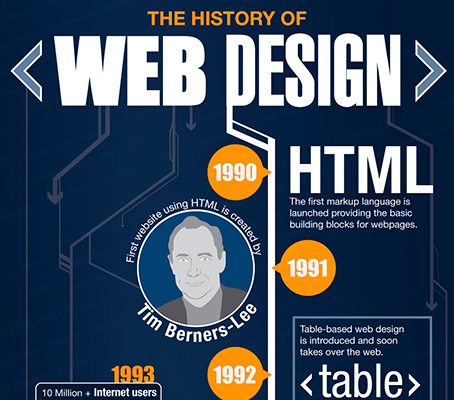Eager To Find Just How Internet Site Layout Has Transformed With Time? Study The Advancement From Simplicity To User-Focused Experiences
Eager To Find Just How Internet Site Layout Has Transformed With Time? Study The Advancement From Simplicity To User-Focused Experiences
Blog Article
Web Content Produce By-Tobiasen Lunde
In the past, websites were straightforward and focused on details. Navigation was straight, and layout was for desktops. Now, user experience is key. Data guides styles for simple navigation. Receptive layouts match various tools. Today, dark setting minimizes strain, and minimal menus improve navigation. Interactive functions engage customers, and vibrant visuals stand out. AI assimilation enhances engagement. See exactly how design has advanced to enhance your on the internet journey.
Very Early Days of Web Design
In the early days of web design, simpleness reigned supreme. Internet sites were basic, with limited colors, typefaces, and layouts. The focus was on providing information rather than fancy visuals. Customers accessed the internet through slow-moving dial-up links, so rate and performance were key.
Navigating please click the next website were straightforward, typically located at the top or side of the web page. Internet sites were made for desktop, as mobile surfing had not been yet prevalent. Material was king, and designers prioritized simple readability over complicated layout elements.
HTML was the key coding language made use of, and designers needed to work within its restrictions. Computer animations and interactive functions were minimal compared to today's requirements. Sites were fixed, with little vibrant web content or tailored customer experiences.
Rise of User-Focused Style
With the advancement of web site design, a change towards user-focused design principles has actually become significantly famous. Today, developing web sites that prioritize user experience is critical for engaging visitors and attaining business objectives. User-focused design includes recognizing the needs, choices, and actions of your target market to tailor the website's layout, web content, and includes appropriately.
Designers now perform thorough study, such as individual studies and use testing, to collect insights and comments directly from customers. This data-driven approach assists in creating instinctive navigating, clear calls-to-action, and aesthetically appealing user interfaces that reverberate with visitors. By putting the individual at the center of the layout procedure, websites can provide a more individualized and pleasurable experience.
Receptive style has additionally become a crucial element of user-focused layout, guaranteeing that websites are enhanced for various gadgets and display dimensions. This versatility enhances access and functionality, catering to the diverse means customers communicate with sites today. Essentially, the surge of user-focused layout signifies a shift towards creating digital experiences that focus on the needs and expectations of the end user.
Modern Trends in Website Design
Discover the most up to date fads forming website design today. One famous trend is dark setting layout, using a smooth and modern-day appearance while decreasing eye stress in low-light settings. One more crucial fad is minimalist navigation, streamlining food selections and boosting user experience by focusing on essential elements. Integrating micro-interactions, such as computer animated buttons or scrolling results, can develop a more engaging and interactive website. Receptive design continues to be essential, guaranteeing seamless customer experiences throughout various gadgets. In addition, using strong typography and asymmetrical layouts can add aesthetic interest and draw attention to details content.
Incorporating AI modern technology, like chatbots for client support or individualized referrals, boosts customer involvement and streamlines processes. Availability has additionally become a considerable pattern, with designers focusing on comprehensive style methods to deal with diverse individual needs. Welcoming sustainability by maximizing web site performance for rate and effectiveness is an additional emerging pattern in website design. Working together with individual responses and data analytics to repeat and boost design constantly is essential for remaining relevant in the ever-evolving electronic landscape. By accepting these modern-day fads, you can produce a visually appealing, user-friendly website that resonates with your target market.
Verdict
As you review the advancement of site style from the very early days to now, you can see exactly how user-focused design has actually come to be the driving pressure behind contemporary patterns.
Accept the trip of change and adaptation in website design, constantly maintaining the user experience at the center.
Keep existing with the most up to date fads and technologies, and never stop evolving your strategy to produce visually magnificent and straightforward internet sites.
Evolve, adapt, and produce - the future of web design is in your hands.
